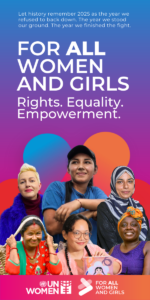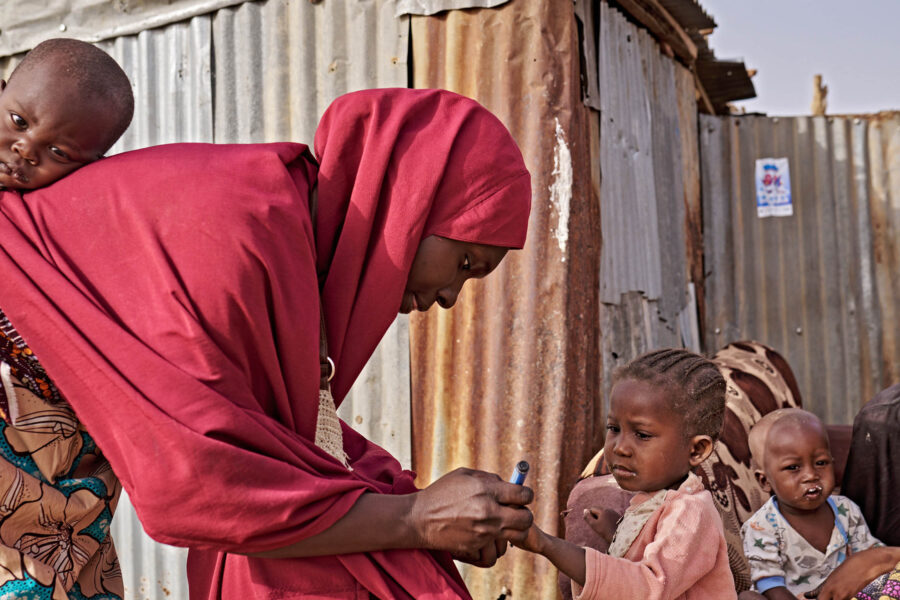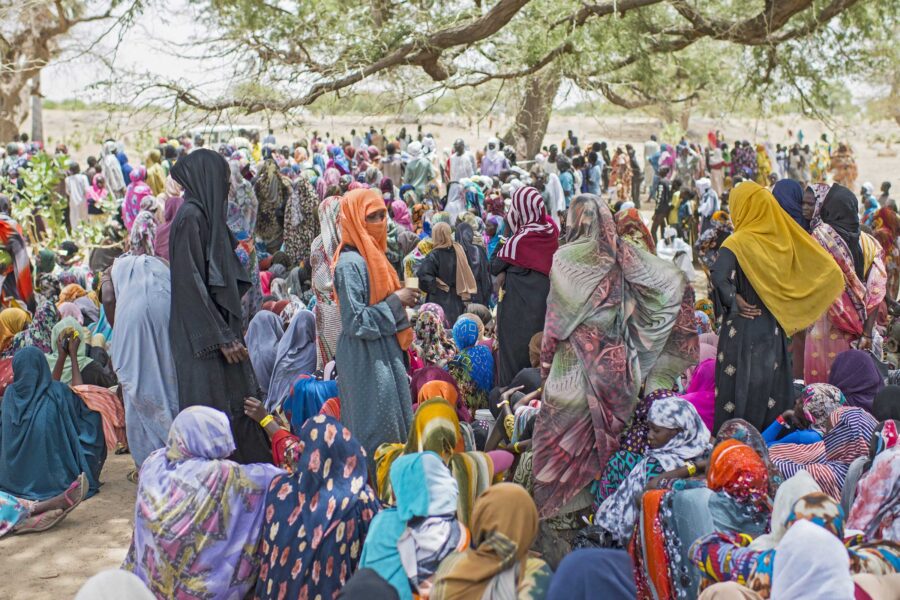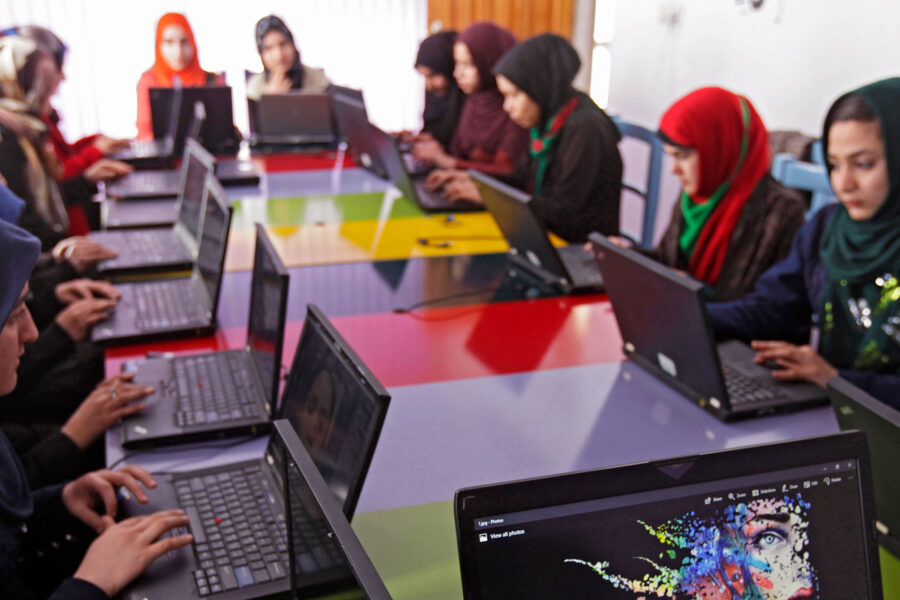Repression of women is blocking the SDGs
The “shadow pandemic” of violence against women and girls shows little sign of abating. Tackling this global scourge calls for far more effective joining up of individual measures, embedding gender equality throughout all 17 SDGs
Gender — Global
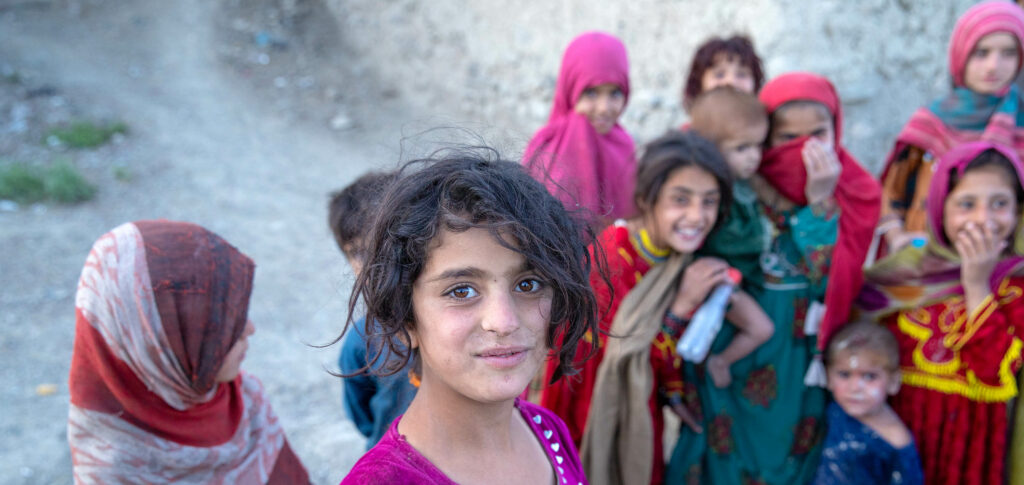
Anyone familiar with the 2030 Sustainable Development Agenda will realize how central gender equality is to achieving its goals. As paragraph 20 of the agenda states: “The achievement of full human potential and of sustainable development is not possible if one half of humanity continues to be denied its full human rights and opportunities.”
It is not a coincidence that the Sustainable Development Goals (SDGs) repeatedly refer to the need to achieve gender equality and the empowerment of women in the same sentence, as inequality based on gender predominantly affects women. One of the main ways in which this equality can be achieved is by supporting women to realize their full potential. In its General Recommendation 19, the Committee on the Convention on the Elimination of All Forms of Discrimination Against Women (CEDAW) acknowledged that “the effect of such violence […] is to deprive them the equal enjoyment, exercise and knowledge of human rights and fundamental freedoms.”
There is an explicit understanding that only when women can fully represent their needs and advocate for their rights, as well as participate fully and equally in decision-making and have the resources to do so, can we begin to meaningfully tackle gender inequality. Unfortunately, looking at the bigger picture, we cannot ignore the fact that we are only a few years away from 2030, yet very far from achieving gender equality. Women and girls continue to be threatened, attacked, shamed, and subjected to violence for articulating and demanding their needs, including the right to be free from violence based on their gender or sex. Women leaders and representatives, be they women politicians or heads of women organizations, continue to be vilified, body shamed, and attacked, using misogynistic and sexist language, and have their integrity, intelligence, and values questioned. These are all ways of dissuading women from participating in public and political life.
Such incidents are not limited to any particular region, political system, level of economic prosperity, or culture. In fact, we are witnessing a worrisome proliferation of violence against women across the world with the intention to silence women, to prevent them from expressing their views, and robbing them of their right to assemble and express themselves freely. Some of the reasons why women come under these attacks are not new, such as women:
- uncovering corruption or human rights violations, including against their communities or children
- highlighting attacks on the environment and mother Earth and their exploitation
- behaving in ways that are contrary to established social and religious norms
- demanding accountability for acts of violence against them in the public or private sphere
- calling out their exclusion and marginalization from peace processes and governance
However, some of the reasons why women are being attacked relate to rights that the international community thought had seen significant progress in the last decades, and have rather been taken for granted. These include the rights of women and girls to seek and receive education and to access sexual and reproductive health. But the Taliban banning women and girls from education above grade 6 in Afghanistan, the gas attacks on girls attending school in Iran, and the severe restriction of the right to abortion in several countries all demonstrate the fact that fundamental rights that women and girls may have enjoyed can be lost – almost overnight – again.
Moreover, even an activity as simple as commemorating the international day for ending violence against women on 25 November each year is no longer a straightforward and non-controversial issue. Over the last two years, we have seen governments and non-state actors crack down on efforts by women and feminist groups to commemorate this important day, under the pretext of upholding law and order (on the basis that women did not have the right permissions and that banning commemoration is for their own protection).
More recently, women have been increasingly attacked for articulating the defense of their rights to equality and freedom from discrimination based on their sex. This includes the specific needs they may have that emanate from this characteristic, such as the right to single-sex spaces where it would be necessary and proportionate to achieve a legitimate aim – such as ensuring fairness, non-discrimination, and the protection of the overwhelming majority of women and girls against violence based on their female sex. It also encompasses the right for women and girls born female to be attracted to members of their own sex.
Key, binding international treaties, including the UN International Bill of Rights and CEDAW, both recognize and prohibit discrimination based on sex. It is of note that the CEDAW committee later extended the meaning of that discrimination (in General Recommendation 28) to also encompass discrimination based on gender, but with reference to the distinct concept of biological differences: “socially constructed identities, attributes and roles for women and men and society’s social and cultural meaning for these biological differences resulting in hierarchical relationships between women and men and in the distribution of power and rights favoring men and disadvantaging women.”
These latest regressions appear – in my view – to thrust the original basis on which discrimination takes place and is prohibited (namely, discrimination based on sex) center stage. It is becoming clear that the discrimination and violence exercised against women and girls is increasingly taking place in a number of countries on the basis of their perceived female sex, or needs related to their female sex. Unfortunately, today there is a concerning deprioritization of sex-related data, driven in large part by a deliberate conflation of sex and gender, which leads to erroneous conclusions, mischaracterization of problems in society, and therefore also to misinformed responses.
It also leads to an inadequate data set from which to understand the particular needs of those affected by gender-based discrimination, including transwomen and transmen. These problematic consequences are exacerbated by the fact that evaluations of programs and policies to end and respond to violence against women and girls continue to be inadequate – as is data collection. The widespread and at times deliberate conflation of sex with gender and the steady decision not to collect sex-related data in a number of countries further contribute to this problem. It is worth noting that article 74 of the 2030 Agenda states that follow-up and review processes at all levels must be rigorous and evidence based, and informed by country-led evaluations and data that are disaggregated along a number of factors, including sex.
The term intersectionality has been defined in many ways. At its heart “it recognizes that people’s lives are shaped by their identities, relationships, and social factors.” While as a term it does not appear in the text of the 2030 Agenda, it includes a number of other terms such as “interlinkages,” “interconnected,” and “integrated.” These terms demonstrate that the drafters understood that the goals and indicators of the 2030 Agenda were more than the summed parts of a whole that could only be addressed in silos, independently from each other.
We know that applying an intersectional lens helps connect human rights to multiple forms of discrimination that people experience. We also know that in the case of violence against women and girls, we need to consider how sex and/or gender intersects with other inequalities and oppressions to produce unique experiences of violence. Furthermore, “intersectional approaches to VAWG [violence against women and girls] recognize that all oppressions exist simultaneously, and that categories of oppression mutually construct each other to create unique experiences of violence for women and girls” (see UN Women, The value of intersectionality in understanding violence against women and girls, page 4).
Despite that knowledge, policymakers and states still do not take a comprehensive approach to connecting the dots and looking at matters holistically. Take the clear impact that pornography has had on negatively shaping the views of men and boys about women and girls, objectifying them, normalizing violent sex, and creating an expectation for it. Yet the Agreed Conclusions of the 67th session of the Commission on the Status of Women that was held with the priority theme “Innovation and technological change, and education in the digital age for achieving gender equality and the empowerment of all women and girls” only referred to child pornography but not the wider harmful impacts of pornography.
We are also hearing less and less about women who, due to intersecting grounds, are facing increased rates of violence by state and non-state actors, intimidation, and sexism, and who also face higher barriers in being able to access assistance, protection, and care. For example, in the US today, black and indigenous women are at a disproportionately greater risk of being killed at the hands of police, at a rate more than twice that of white women. Furthermore, if there is one takeaway from the collection of communications that the mandate has sent to different governments over the years, it is that women and girls belonging to minorities that already suffer discrimination are often those that experience the most severe forms of violence – such as black and indigenous women, women and girls belonging to religious minorities, and disabled women, among others.
Despite the understanding that intersectional causes of violence require intersectional needs assessments and integrated service delivery for survivors of violence, this is not happening. For example, in a recent report issued by the Organisation for Economic Co-operation and Development, only 48% of national governments report promoting integrated service delivery for women survivors of violence “somewhat” or to a “great extent.” Within this context, funding for intimate partner violence continues to be irregular and inadequate, and many of the policy prescriptions to address gender-based violence continue to be “top down.” A recent UN Women policy brief on addressing violence against women through social protection schemes review of a global sample of national social protection strategies revealed that specific policies or measures to prevent or respond to violence against women only occurred in half of these.
I have always said that the true litmus test for how developed, prosperous, and peaceful a society is, is how it treats its women and girls. This cannot be achieved if we do not take an interconnected approach to applying the SDGs, one in which we try to give meaning to transformative gender equality through each and every SDG, both individually and collectively.

